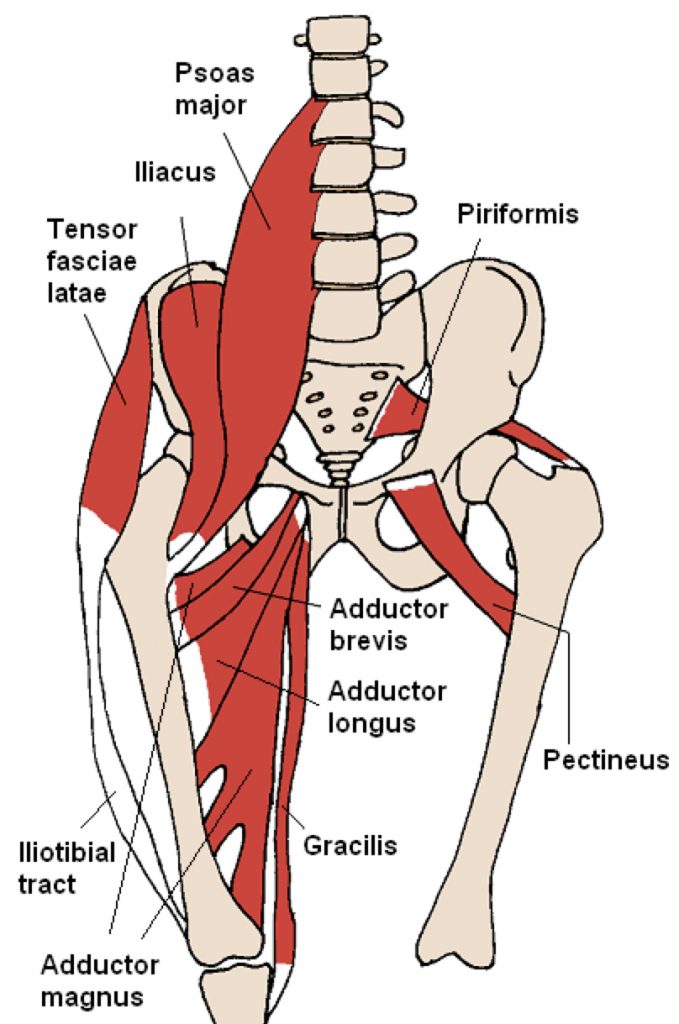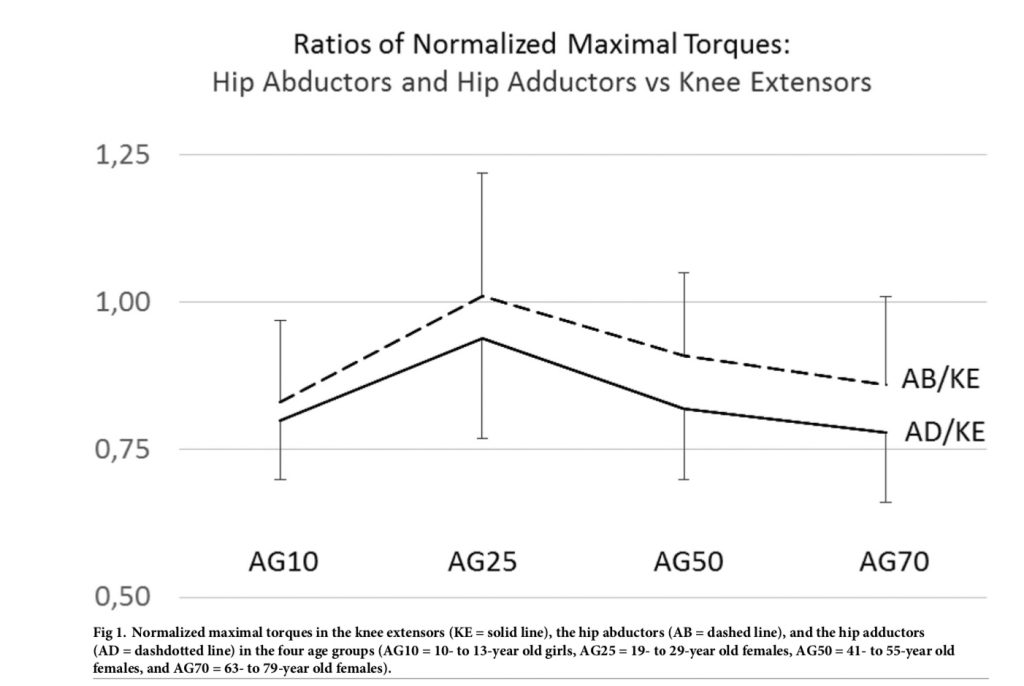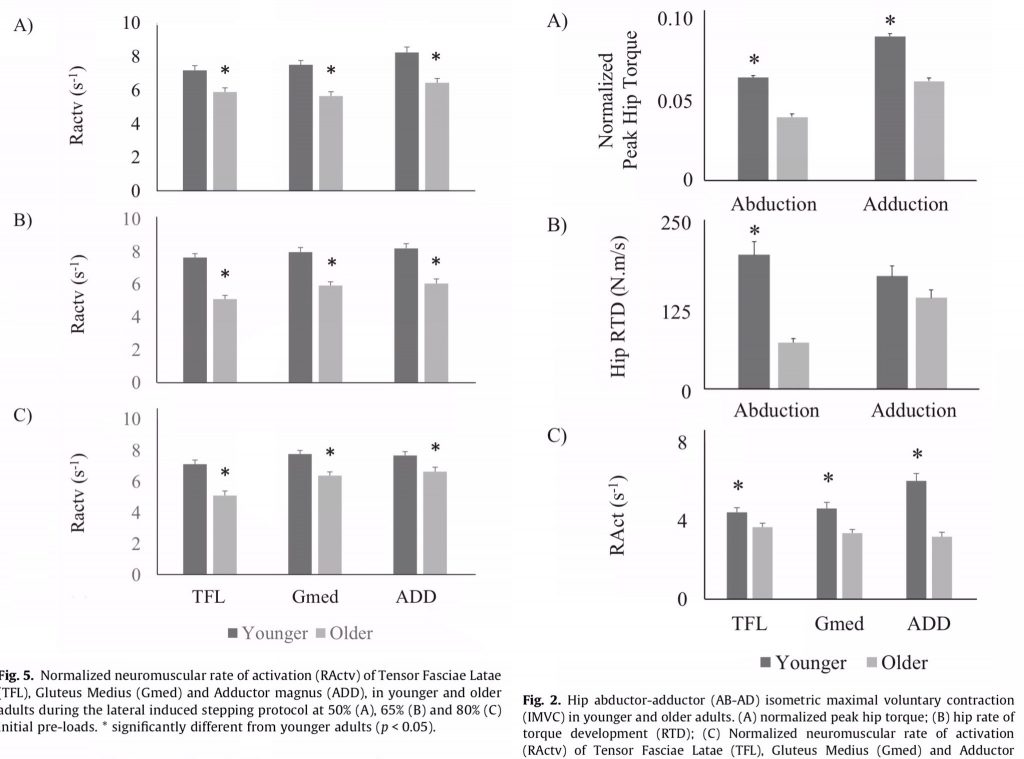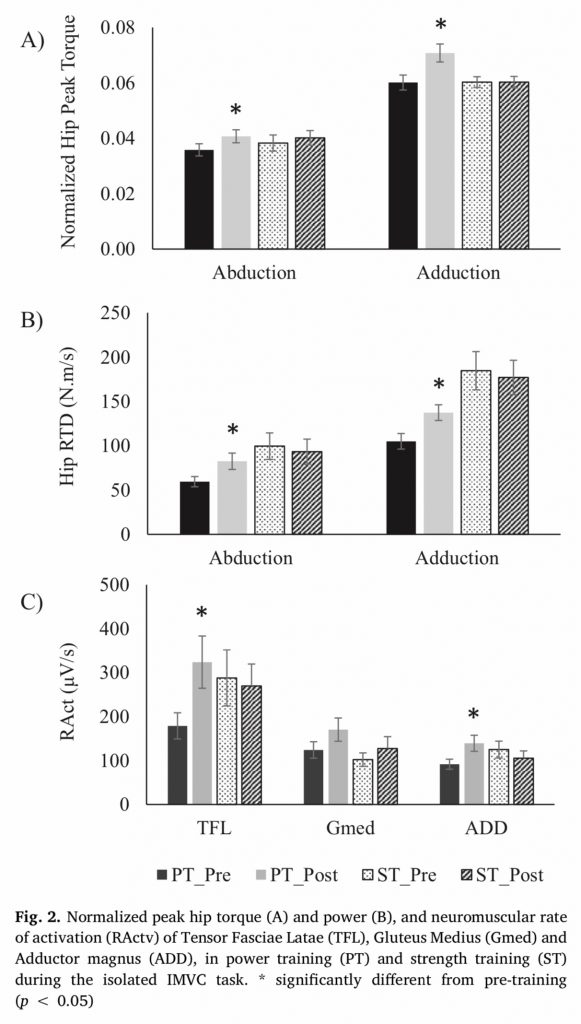Exercise professionals involved with older adults pay a great deal of attention to the lower limb prime movers¹ and exercises² which will enhance the strength and power of these important muscles, and so we should. There are all sorts of ingenious ways to increase the strength, function and aesthetics of these muscles, just take a quick look at Instagram and you’ll see what I mean. The hip abductors are now recognised also, in both research and practice, as playing a pivotal role in hip and knee function influencing gait and postural stability, particularly in the medio-lateral plane. But what about the hip adductors? Are they a forgotten piece of the puzzle? Rarely do we see much attention paid to exercising these muscles of older adults in any sort of meaningful way³. This is interesting in and of itself and a curiosity, but the inference is that the adductor muscle group is not viewed as important enough to dedicate any time to specifically develop its neuromuscular capacity irrespective of some recent research that certainly suggests otherwise. There is now enough evidence to support the adductors being treated as a distinct target for improved muscle strength and power production. In fact, FGS would contend that this muscle group deserves the same degree of focus as the quads, GMax, hamstrings and hip abductors in any resistance training program for older adults given the following:
- The adductor magnus (AM), the 3rd largest muscle can be considered as a primary antigravity muscle, like the GMax (Takizawa et al 2018).
- Age-related hip adductor strength loss appears to be more pronounced compared to the knee extensors (Daun & Kibele, 2019).
- Postural instability with ageing is especially problematic in the medio-lateral plane (Mille et al 2013).
- Neuromuscular rate of activation of adductors (AM) is significantly lower in older versus younger adults for both forceful static muscular contractions (IMVC) and dynamic recovery following lateral balance perturbations (Inacio et al 2019).
- Power-based resistance training of the hip adductors (and hip abductors) has been shown to elicit improvements in maximal neuromuscular performance and enhanced medio-lateral balance recovery. Traditional (slower tempo) performed resistance training did not result in significant improvements in isolated or balance-related neuromuscular or biomechanical performance (Inacio et al 2018).
For local Townsville residents interested in FitGreyStrong’s specialised Exercise Physiology services or exercise programs for older adults or for Master’s competitors wanting to enhance athletic performance, contact FitGreyStrong@outlook.com or phone 0499 846 955 for a confidential discussion.
For other Australian residents or oversees readers interested in our services, please see here.
Disclaimer: All contents of the FitGreyStrong website/blog are provided for information and education purposes only. Those interested in making changes to their exercise, lifestyle, dietary, supplement or medication regimens should consult a relevantly qualified and competent health care professional. Those who decide to apply or implement any of the information, advice, and/or recommendations on this website do so knowingly and at their own risk. The owner and any contributors to this site accept no responsibility or liability whatsoever for any harm caused, real or imagined, from the use or distribution of information found at FitGreyStrong. Please leave this site immediately if you, the reader, find any of these conditions not acceptable.
© FitGreyStrong




